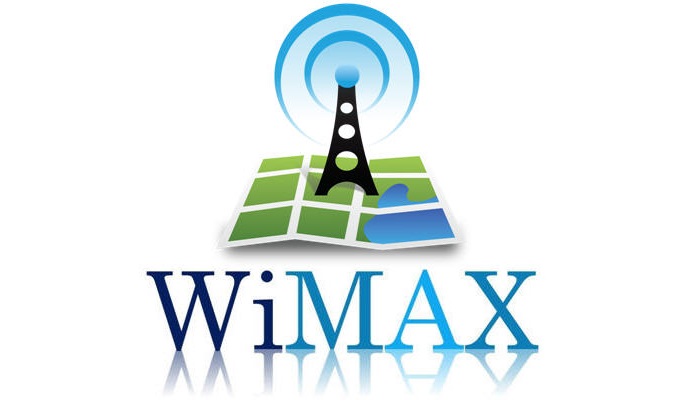What is WiMax?
WiMax (Worldwide Interoperability for Microwave Access) is a wireless broadband technology with huge coverage and considerable download speed. In simple terms, you can think of it as a WiFi network with much better range and speed. Its official term is IEEE standard 802.16, but it’s easier to call it WiMax. As it is under the 802.16a standard, this implies that in a wireless network of metropolitan area (MAN) different devices can be connected to the Internet, whether fixed or portable.
It is a broadband connection that travels through radio waves at frequencies from 2.5 to 5.8 GHz and allows wireless connections at a distance of up to 70 kilometers.
If you don’t have ADSL or fiber optic coverage in your WiMax home, look to replace cable-based technologies, such as ADSL. It is precisely because of this modality that it can reach areas not used by conventional methods, since the installation does not depend on the implementation of cables in areas far from urban areas.
There are two main types of this technology
Fixed WiMax
Point-to-multipoint technology, wherefore mobile is a multipoint technology, resembling that of a cellular infrastructure.
The antenna is positioned so that it points to the direction of the WiMax base station. That’s why it’s called a line of sight. This way you have a better reception and sending of information.
Mobile WiMAX
Based on OFDMA (Orthogonal Frequency Division Multiple Access) technology that offers inherent advantages in terms of latency, radio frequency spectrum usage efficiency, and advanced antenna support, ultimately resulting in superior performance than today’s wide area wireless network technologies.
How does WiMax work?
WiMax works on three elements:
- WiMax Base Station
- WiMax Receiver
- Backhaul
WiMax Base Station
A single tower can transmit approximately 50 square kilometers. Basically, it works like a radio tower. Any device, whether fixed or mobile, that is in this area can have an Internet connection. The idea is that through the standard established by the WiMax Forum, the connection would not be limited to any device or company, as they focus on interoperability.
WiMax receiver
The receiver may vary depending on the device that will connect: from an antenna to a piece integrated into your cell phone. It is also known as a local client computer, CPE. The antenna you place in your home must contain a cable, which connects to your computer or router; to supply the signal to multiple devices. So you can create a kind of WiFi connection in your home.
Backhaul
The wide range of WiMax is due to the use of several towers and the connection between them. This connection between bases is known as backhaul.
Interoperability between WiMax and Wi-Fi
WiMax does not conflict with Wi-Fi, on the contrary, it is an add-on. Because IEEE 802.16 networks use the same LLC (Link Level Control) protocol, all other LANs or WANs can connect to them, and serve for common pipelines. Wi-Fi complementarity considerations extend to all Ethernet modes over physical cabling, token ring, and all other standards using the same LLC.
For those with more knowledge it must also be said that one of the great differences that exist between the two platforms (WiFi and WiMax) lies in the fact that Wi-Fi runs through the Media Access Control’s CSMA/CA protocol, while WiMax runs over a MAC-oriented connection. In addition Wi-Fi is designed for indoor environments, while WiMax is designed for outdoor environments, being able to give access to more than 1000 users simultaneously.
WiMax Physical Layer
WiMax is based on orthogonal frequency division multiplexing (OFDM). OFDM is a transmission scheme that allows us to transmit high-speed data, video, and multimedia communications. This transmission scheme is used by many commercial systems, such as DSL, WiFi, DVB-H. OFDM is an efficient scheme for transmitting high data rates in environments without direct vision and with multipath distortion.
Who does WiMax depend on?
WiMax depends on its formulation and evolution of a multi-tenant consortium, the WiMax Forum. More than 368 companies are members of the WiMax Forum. WiMax Forum is a group of companies that are responsible for designing the standards and standards of WiMax technology and testing all the new components that are emerging.
In fact, the only body enabled to certify compliance with the standard and interoperability between equipment from different manufacturers is the WiMax Forum. Any equipment that is not certified cannot guarantee interoperability with other products.
Advantages and disadvantages of WiMax technology
The WiMax signal is a great advantage in those areas with hardly any Internet coverage. However, this connection also has some disadvantages compared to other types of connections such as ADSL or fiber:
Advantages of WiMAX
- Present in remote areas where other connections do not arrive.
- No external installation with wiring required.
- Installation is usually free.
- Allows you to make calls using VOIP.
- You don’t need to have a landline.
- High bandwidth of up to 60 connections.
- 4G technology.
- Speeds up to 75 Mb.
- Good security: usually have great security measures, information encryption, etc.
- Ease of operation and mobility: we can connect from anywhere coverage arrives without any problem.
- Fits different network topologies: Point-to-point, Point-multipoint or fixed, nomadic and mobile.
Disadvantages of WiMAX
- It requires installing a WiMAX antenna on the facade of the building.
- There is only coverage in areas where a company has installed its own station.
- Loss of intensity depending on the distance of the repeaters.
- The navigation speed is lower than that of fiber optics or ADSL.
- The connection may be interference by external factors.

